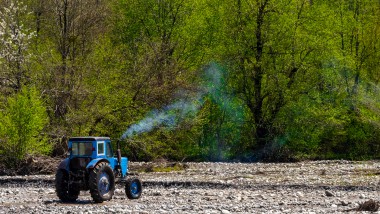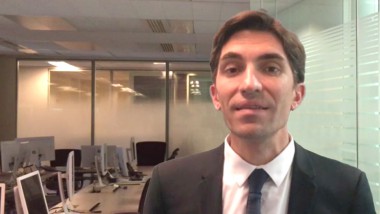Is the Future Worth Investing for?
Key Takeaways:
- More and more families everywhere are losing homes, in a matter of minutes, through disasters that damage the land, from forest fires and hurricanes to flash floods and droughts. Degraded land is highly vulnerable to such extreme and erratic weather events. With more than 1.3 billion people living on degrading land, the potential for forced mass migrations and internal displacement following a disaster is high.
- No single government has sufficient resources to help communities fully adapt to the changes and then recover after an environmental disaster.
- This reality motivated us to work together to set up the Land Degradation Neutrality (LDN) fund project1.
Resources
Ambroise Fayolle is Vice-President of the European Investment Bank.
Rémy Rioux is Chief Executive Officer of Agence Française de Développement Group.
Philippe Zaouati is Chief Executive Officer at Mirova.
As the innovative Land Degradation Neutrality fund project1 reaches a $100 million first close, Monique Barbut, Ambroise Fayolle, Rémy Rioux and Philippe Zaouati explain the role of sustainable land management in promoting resilience to climate disasters.
More and more of us are investing our life-savings into pension and other retirement funds. It is an industry that is now worth tens of trillions of dollars. Our vision is to retire in peace and comfort or offer our children a secure future. But are our life-savings going into investments that deliver our vision? Well, not yet. The reality is the Earth is fragile and changing. No single government has sufficient resources to help communities fully adapt to the changes and then recover after an environmental disaster. It is a growing but ominous reality. The cost and number of climate-related disasters is rising. The total cost of the damage from the environmental disasters of 2005 to 2014 is over $1.4 trillion2.
More and more families everywhere are losing homes, in a matter of minutes, through disasters that damage the land, from forest fires and hurricanes to flash floods and droughts. Degraded land is highly vulnerable to such extreme and erratic weather events. While the death toll from such disasters may be falling, the impoverishment and collapse of communities following these disasters has long-term consequences.
People living on such land have little chance of recovery. With more than 1.3 billion people living on degrading land3, the potential for forced mass migrations and internal displacement following a disaster is high. In 2017, for example, 18.8 million people in 134 countries were displaced by disasters4. This is more than the number of people that were displaced by conflict in the same year. These are increasingly explosive political issues today.
So far, the private sector has not fully grasped the need or the opportunity
Private capital will need to evolve to help deliver long term resilience and sustainable economic development. As investors, we can make sure that our investments serve the planet and that governments encourage private funds to invest in our futures.
In that sense, land restoration is an untapped, profitable and potentially multibillion dollar industry. More than 500 million hectares, of the over 2 billion degraded hectares, can be quickly and relatively easily restored to good health and productivity. It is cost effective too. So far, the private sector has not fully grasped the need or the opportunity.
We know the private sector can turn a profit and at the same time help meet the daily needs of poor and climate-vulnerable communities. We also know that the choices the private sector makes now will have a bearing on the survival of humankind.
This reality motivated us to work together to set up the Land Degradation Neutrality (LDN) fund project1. There is nothing else like it. The main targets are private institutional investors, including pension funds, who are investing for the long term.
With time, their investment will be used to recover or restore degraded land. The productivity of the restored land, in turn, will produce a return for the investor. In the LDN fund design, public funds are provided to underwrite the risk the private investors are taking.
At a first close, about $100 million has been raised from both public and private impact investors5. More than 140 projects have been assessed. The strong interest by investors, signals the appetite to invest in better land management. The longer-term target is for public and private investors to raise $300 million to finance such innovative activities.
The benefits of promoting sustainable land management and land use planning to make families and communities more resilient to climate change cannot be over-emphasised.
Public finance will not suffice. However, good policy can motivate business to step into the world of sustainable land management. There is an appetite and a high potential for success. Together, we can deliver a future worth investing in.
Published in November 2018. Published for the first time on 1 October 2018 in Environmental Finance.
2 Source : US ISDR, Economic and Human Impacts of Disasters, 2005-2014, https://www.flickr.com/photos/isdr/16111599814/in/album-72157628015380393/
3 Source: Knowledge Hub, UNCCD, Global Land Outlook, Executive Summary, https://knowledge.unccd.int/glo
4 Source: Internal displacement monitoring centre, http://www.internal-displacement.org/countries
5 Source: Mirova, as of 1st October 2018
Affiliate of Natixis Investment Managers
Mirova is a subsidiary of Natixis Investment Managers International.
French Public Limited liability company with board of Directors.
Share Capital: €8 322 490
Regulated by the Autorité des Marchés Financiers (AMF) under n° GP 02014.
RCS Paris n° 394 648 216
59 avenue Pierre Mendès France
www.mirova.com
Natixis Investment Managers International
French Public Limited liability company with board of Directors (Société Anonyme)
Share capital : €51 371 060,28
RCS Paris : 329 450 738
Regulated by the Autorité des Marchés Financiers (AMF) under no. GP 90-009.
43 avenue Pierre Mendès France
75013 Paris
www.im.natixis.com
Natixis Investment Managers
RCS Paris 453 952 681
Share Capital: €178 251 690
43 avenue Pierre Mendès France
75013 Paris
www.im.natixis.com
This communication is for information only and is intended for investment service providers or other Professional Clients. The analyses and opinions referenced herein represent the subjective views of the author as referenced unless stated otherwise and are subject to change. There can be no assurance that developments will transpire as may be forecasted in this material.
Copyright © 2018 Natixis Investment Managers S.A. – All rights reserved





 Finance Can and Must Play its Role in Fighting Land Degradation
Finance Can and Must Play its Role in Fighting Land Degradation
